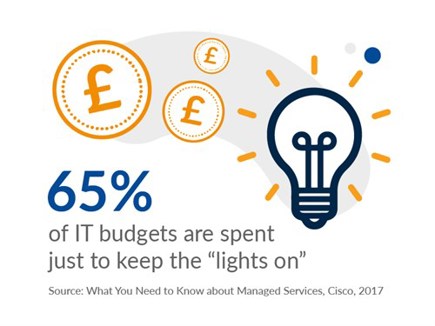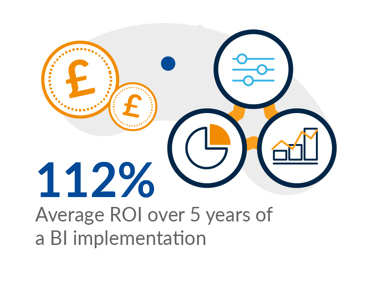Ways to reduce your costs in 2022
The CFO Take on Tech Budgets
With the start of the new financial year, Mark Lightfoot, CFO at Chess, explains his new approach to tech spending. He covers:
Firstly, I will dispel the often-held conception that the CFO wants to reduce costs first and foremost. However, I would agree that technology investment was low on all but the most technology savvy CFO's shopping lists in the previous decade.
In 2020 almost all businesses saw first-hand the necessity of technology for resilience and survival as they moved to home working, developed new customer interaction methods, and ensured robust supply chains. CFOs were directly involved in those early-stage crisis management exercises. That experience changed the way we looked at what technology can do. We began to see that 'digital transformation' was happening, and we needed to get on board. Moreover, it became clear that once through survival, the intelligent business could see the growth opportunities by continuing to invest intellectual and financial resources in the technological journey.

Technology to grow your business
In the context of technology spending, what is now critical to the C-suite is that money is spent in the most crucial areas rather than not being spent at all. If the desired expenditure amounts to a higher sum than in previous years, but it makes the business measurably 'better', a modern facing CFO will not refuse investment unnecessarily.
What does 'better' mean to the CFO in this environment? We could label it as maximising returns and minimising risks, but personally, I would define 'better' as increasing sales, managing expenses and overhead, driving efficiency and improving security. If a CTO or Head of IT comes knocking with a project that can tick one or more of those boxes, the CFO will be onside immediately.
What is less likely to get immediate buy-in are costly, large, and unwieldy ERP implementations, while any non-essential IT expenditure will likely be refused. After all, sensible prudence should be within the CFO's DNA, and we must recognise that all budgets are constrained to some degree. If we can spend money on making existing systems and processes better, rather than ripping out and starting again, that option will gain our support.
Remember that numerous products and solutions are now available on a service/subscription model, potentially reducing the upfront capital expenditure required, keeping both the CFO and CTO happy!

The new decision process
Furthermore, resources are almost always limited, so how best do we decide what to invest in and predict the benefits? We budget. A robust technology budgeting process should involve all relevant stakeholders from operational, marketing, and, with the move to hybrid working, human resources functions. Discussions should cover hardware, software, telecommunications, cloud platforms and customer/employee relationship management systems and processes. A financial analysis tool should be applied to each potential expenditure event, ROI being as good a start as any, enabling the ranking and prioritising of projects. This financial analysis should be considered in conjunction with security and compliance requirements.
Additionally, it is vital to look at all investments as a collective bucket rather than standalone projects. Communication and interaction between teams is more difficult now that we aren't always sitting next to or near our colleagues. The effective use of integrated systems, information flows, and efficient processes is vital to driving satisfaction amongst people, reducing touch points and costs to serve, and driving the project's desired outcomes. Microsoft Teams has proved an excellent tool for us. In addition, we have been delighted to invest in Microsoft accreditations for our people, enabling them to support our customers on their journey.

Drive Business Efficiency with Power Platform
Introduction to Power Platform Webinar
From Better Data to Smart Investments
From personal experience, one of the most beneficial leaps forward Chess made through the necessity of early 2020 was to rationalise and improve our business intelligence and management information. We made material gains in short order, but the project to improve our data continues, providing key transparency, assessment, and communication benefits. Decisions are made quicker than previously; less time is spent sense-checking what the information is telling us and putting together the story. The future has become easier to predict, using experience as a critical input. Depending on industry and scale, investments in advanced artificial intelligence, prescriptive and adaptive analytics and machine learning are likely to grow and offer benefits to those organisations able to unlock the potential. Our business has invested money, and our people have invested time to understand the potential of Power BI, which continues to transform our information base.

Digital transformation has been a challenge for everyone – that being an admission from a business that had the knowledge, products, and services in our kit bag before the onset of Covid-19. However, I am delighted to see so many of our customers on their journey. I look forward to exploring together how to unlock the growth and innovation potential in their business while providing the fundamental and essential IT and security infrastructure environments to operate in, keeping their business, people and customers safe.
We can help you on your journey and advise on the best approach for your organisation. Contact our expert team and book your FREE technology consultation today.
Speak to a Specialist
You can fill out the form and one of our product specialists will contact you shortly with more information.


About the author
uSkinned
uSkinned, the world’s number one provider of Umbraco CMS themes and starter kits.